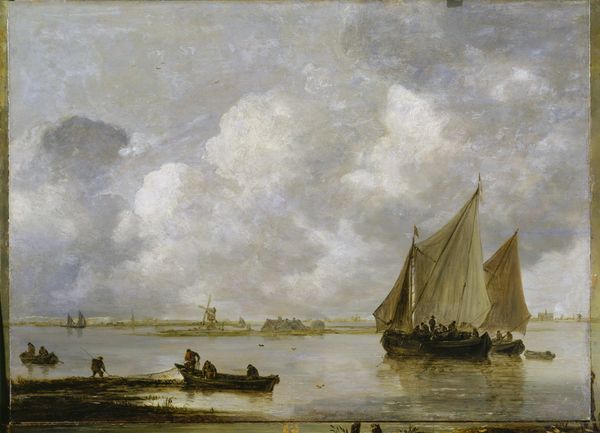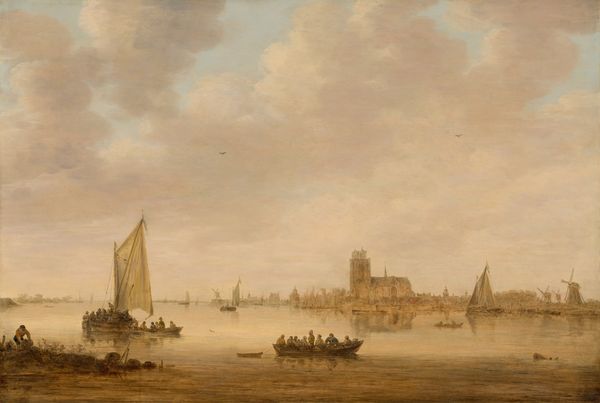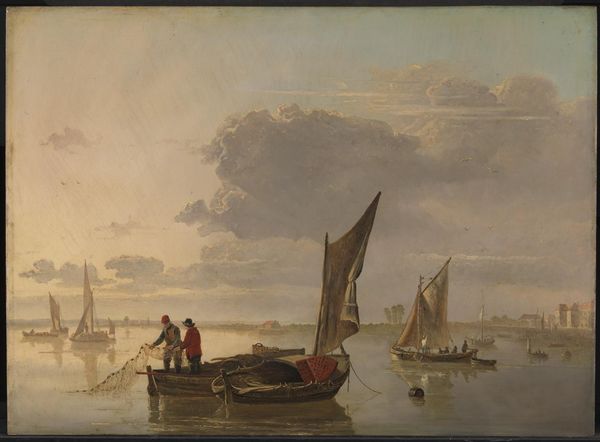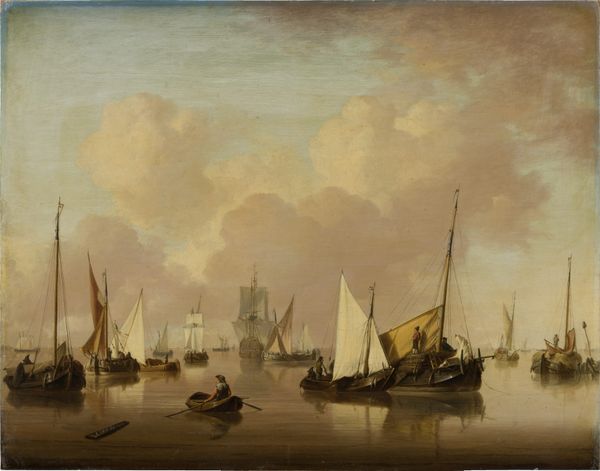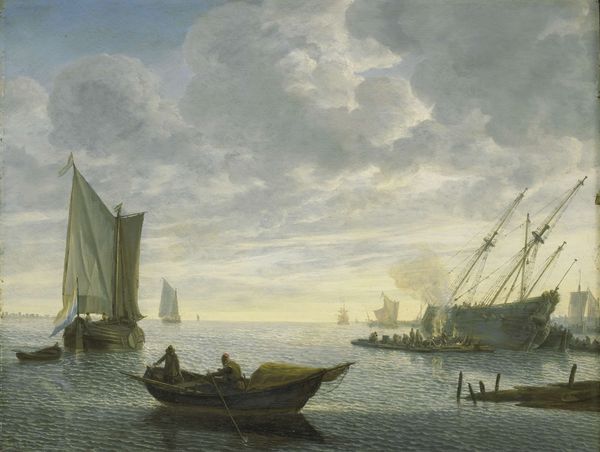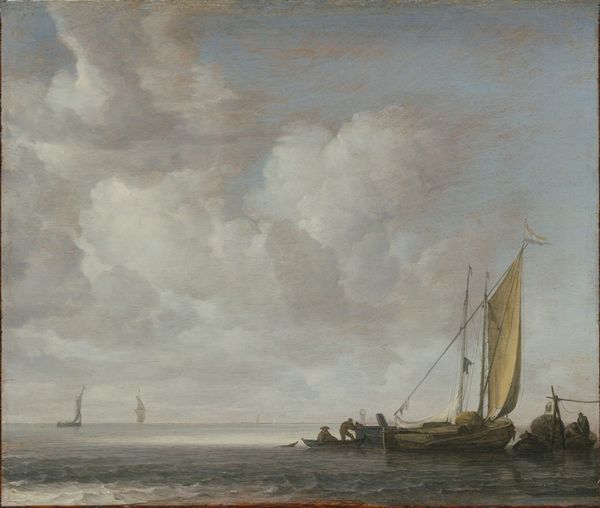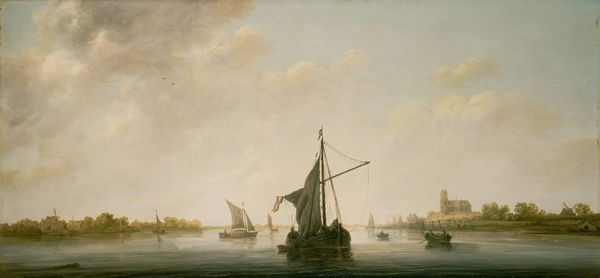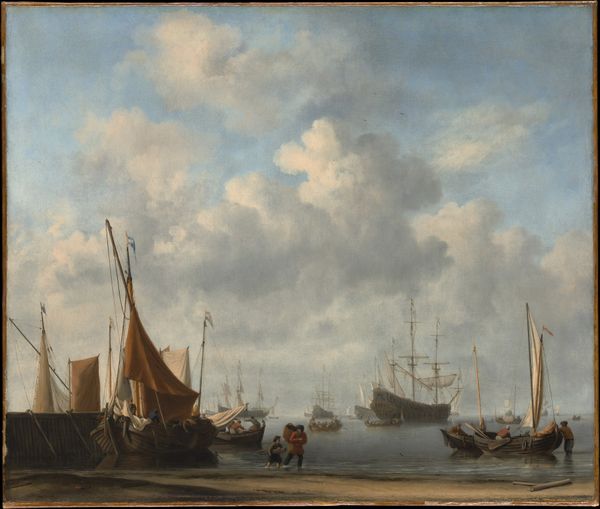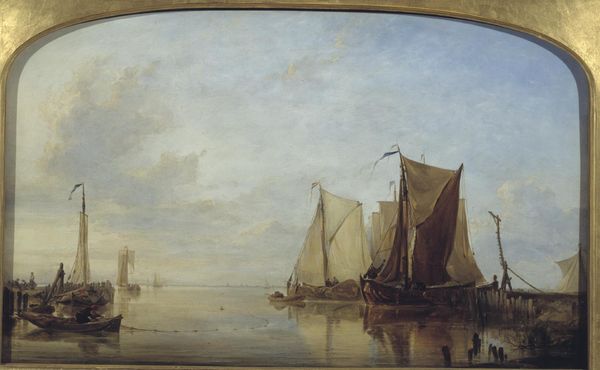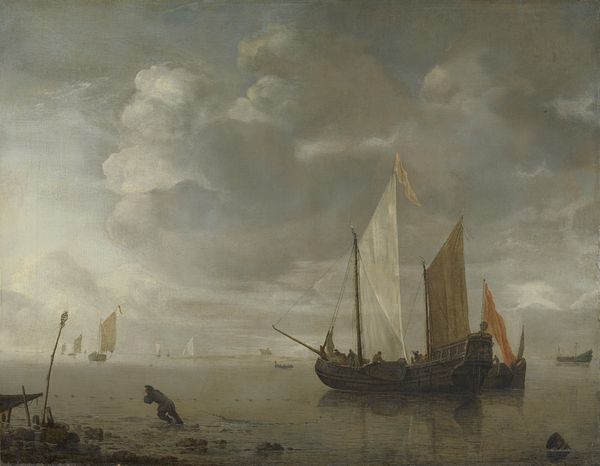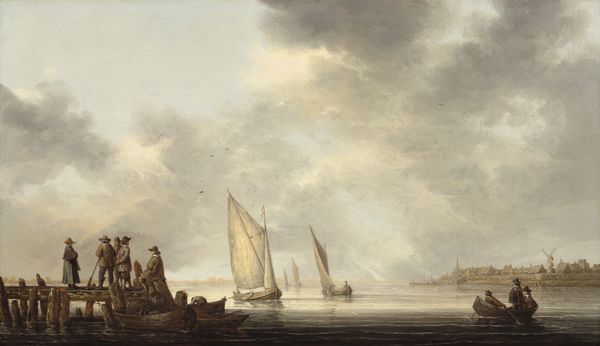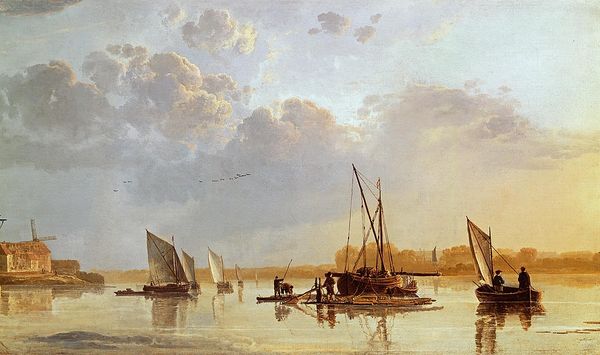
painting, oil-paint
#
dutch-golden-age
#
painting
#
oil-paint
#
landscape
#
river
#
romanticism
#
cityscape
#
realism
Dimensions: height 77 cm, width 102 cm, depth 11 cm
Copyright: Rijks Museum: Open Domain
Editor: This is "View of Dordrecht seen from Papendrecht," painted between 1830 and 1837 by Christiaan Lodewijk Willem Dreibholtz using oil paint. The stillness of the water and the soft light create a very tranquil, almost dreamlike quality. What symbols jump out at you in this cityscape? Curator: The immediate symbols are of course those vessels; the ships themselves carry centuries of cultural weight. Beyond transport, they represented Dutch power, trade, and exploration. But look closer. The church spire in the distance acts as a beacon, a visual link to faith and community amidst the commercial activity. The reflections in the water blur the lines between the material world and its mirrored, perhaps idealized, representation. Editor: Idealized in what way? Curator: Consider the Romantic era. Artists often imbued landscapes with emotional significance. Here, the serene depiction of Dordrecht contrasts with the period's societal changes – industrialization was starting to pick up, after all. This tranquility may reflect a longing for simpler, pre-industrial times, embedding a cultural memory of a Dutch Golden Age. Do you see a trace of nostalgia in this artistic choice? Editor: That’s an interesting point. I was so caught up in the immediate calm of the scene that I missed those possible layers of longing for the past. Curator: The beauty is, that the symbols never function in isolation; we all carry our unique sets of experience which help us re-interpret them. But to really look at them and engage... that is the key. Editor: I will definitely remember that. Thanks, this was very insightful. Curator: My pleasure. Always happy to decode the visual world together.
Comments
No comments
Be the first to comment and join the conversation on the ultimate creative platform.
